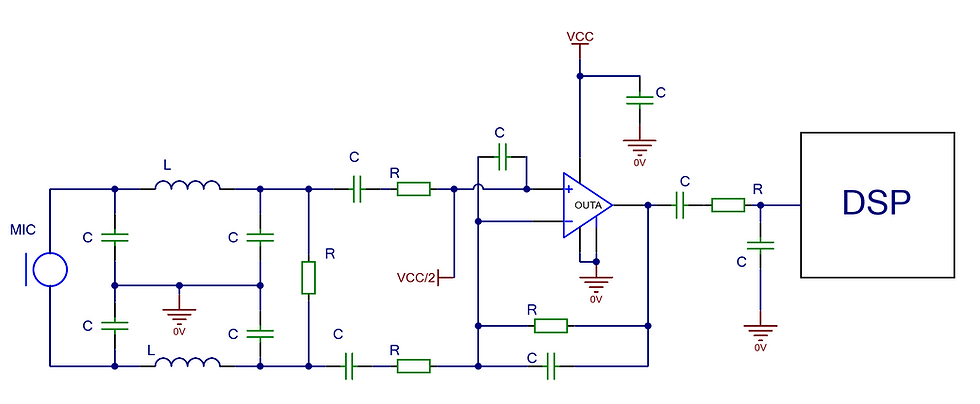Analog vs Digital Gain: Radiated Immunity in Mixed Signal Systems
- Andres Curiel

- Aug 27
- 1 min read
Here is an interesting conundrum I faced some years ago whilst I was working on a product subjected to heavy fields of over 50 V/m during radiated immunity.
Typically, in a mixed signal system where a microphone is used, the gain build up is split between the analogue and digital domains. While the usual focus is on noise floor and dynamic range, the split between analogue and digital gain also determines how the system behaves under radiated immunity.

If too little analogue gain is applied, the microphone signal enters the ADC at a very low level, making it comparable to any RF energy coupled into the signal path; once inside the converter, the DSP scales everything equally, meaning interference artifacts are lifted alongside the desired audio. If too much analogue gain is applied, the preamp not only boosts the audio but also any injected RF, and worse, the op-amp may act nonlinearly and demodulate the RF down into the audio band, producing the classic buzzing or chirping tones often heard when a mobile phone is nearby.
The key is balance: provide enough analogue gain so the ADC input sits comfortably above noise and incidental RF pickup, but not so much that the preamp becomes a demodulator, then leave room to fine-tune gain in the digital domain where scaling does not worsen immunity. Complement this with RF filtering, virtual supply buffering, proper PCB layout, shielding at the microphone input, and careful op-amp selection, and the system will achieve both good audio fidelity and resilience in EMC testing.





Comments